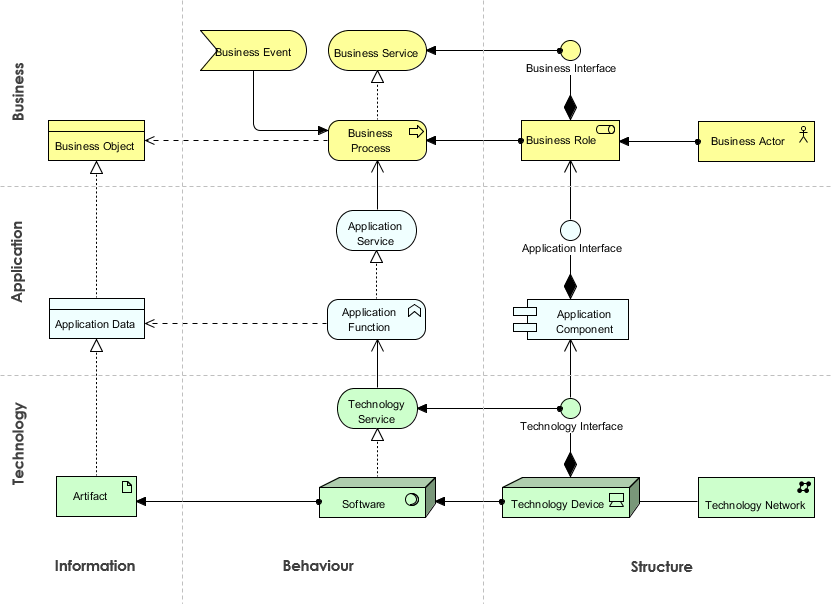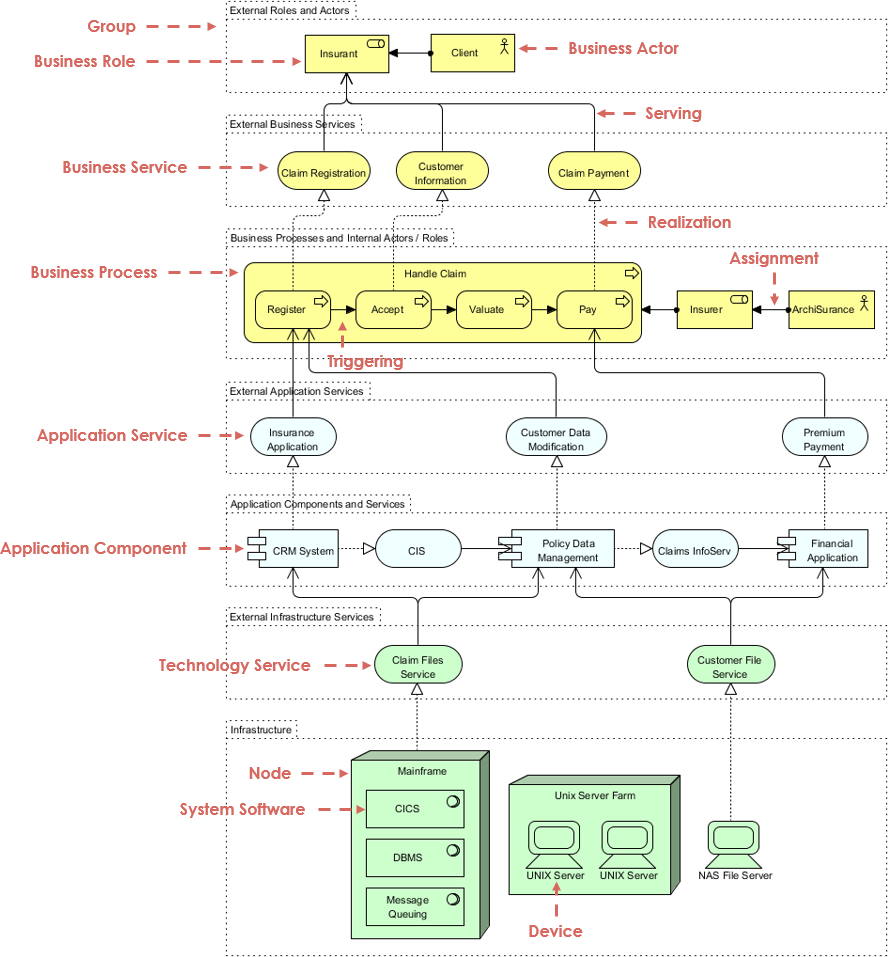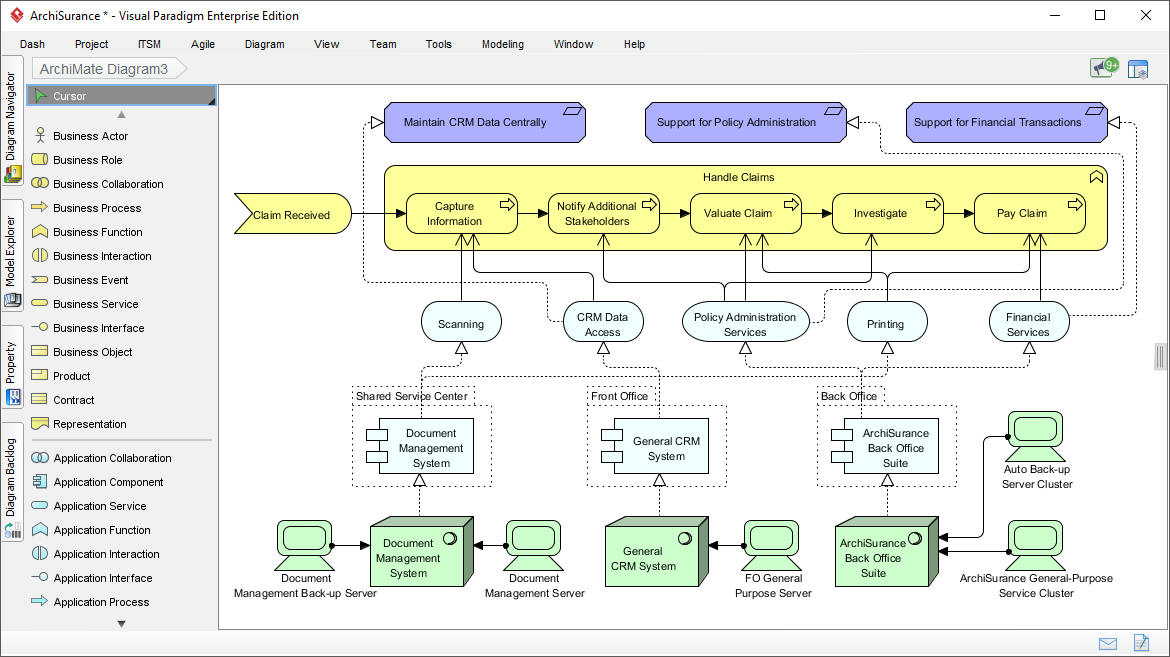Aspects and Layers in ArchiMate Core Framework
The active structure aspect represents the structural concepts (the business actors, application components, and devices that display actual behavior; i.e., the “subjects” of activity).
The behavior aspect represents the behavior (processes, functions, events, and services) performed by the actors. Behavioral concepts are assigned to structural concepts, to show who or what displays the behavior.
The passive structure aspect represents the objects on which behavior is performed. These are usually information objects in the business layer and data objects in the application layer, but they may also be used to represent physical objects.
Layers in ArchiMate3 Core Framework
A layered view provides a natural way to look at service-oriented models. The higher layers use services that are provided by the lower layers. ArchiMate distinguishes three main layers:
- The Business layer offers products and services to external customers, which are realized in the organization by business processes performed by business actors and roles.
- The Application layer supports the business layer with application services which are realized by (software) application components.
- The Technology layer offers infrastructural services (e.g., processing, storage and communication services) needed to run applications, realized by computer and communication hardware and system software.

Example of ArchiMate Core Framework
You can clearly see the uniform approach across layers. In the example below, you can see the integration from the different domains:

This pictures several layers and aspects of an enterprise architecture in one diagram. There are two categories of layers, namely dedicated layers and service layers.
The structural principle behind a fully layered viewpoint is that each dedicated layer exposes, by means of the “realization” relationship, a layer of services, which are further on “used by” the next dedicated layer. Thus, we can easily separate the internal structure and organization of a dedicated layer from its externally observable behavior expressed as the service layer that the dedicated layer realizes.
The order, number, or nature of these layers are not fixed, but in general a (more or less) complete and natural layering of an ArchiMate model should contain the succession of layers depicted in the example given below.
However, this example is by no means intended to be prescriptive. The main goal of the Layered viewpoint is to provide overview in one diagram. Furthermore, this viewpoint can be used as support for impact of change analysis and performance analysis or for extending the service portfolio.

The Open Group Certified ArchiMate 3 Tool
ArchiMate 3 Diagrams
Modeling enterprise architecture for business improvement projects with The Open Group ArchiMate® 3. ArchiMate 3 provides a rich set of modeling notations and concepts that supports modeling architectures consistently within and across domains. As a certified ArchiMate 3 enterprise architecture tool, Visual Paradigm supports all the vocabulary, notation, syntax, and semantics of the ArchiMate 3 visual modeling language. And by combining the use of ArchiMate in TOGAF ADM, you can achieve a consistent description and representation of the architectural details throughout the whole transformation cycle.

Certified ArchiMate 3 Tool
Visual Paradigm is a certified ArchiMate 3 enterprise architecture tool (Certificate from The Open Group) that supports all the vocabulary, notation, syntax, and semantics for all ArchiMate language elements and relationships. Besides, Visual Paradigm supports the ArchiMate Viewpoint Mechanism which enables users to create model views with any of the official viewpoints (examples) or user-defined viewpoints. Visual Paradigm also support ArchiMate 3.0 Model Exchange File Format.

Other ArchiMate Resources
- What is ArchiMate?
- Full ArchiMate Viewpoints Guide
- ArchiMate 3 Update
- What’s New in ArchiMate 3?
- Using ArchiMate Tool with TOGAF ADM